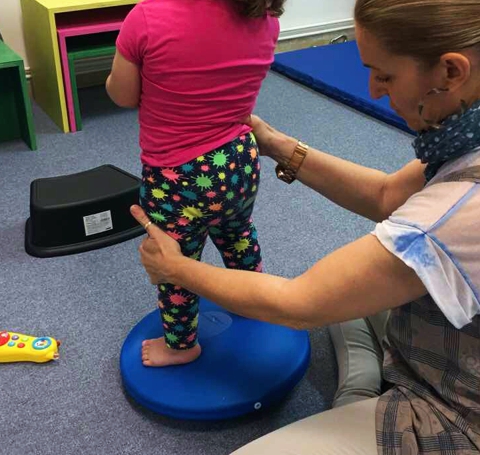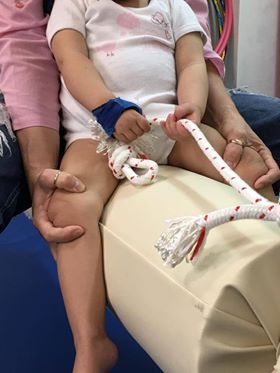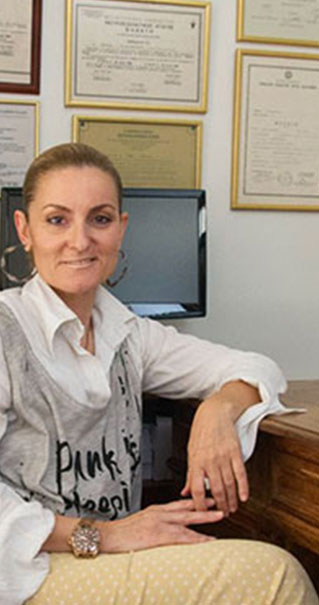Table of Contents
What is craniosacral therapy Therapy?
Cranial Sacral Therapy (CST) is a gentle therapeutic approach. Cranial Sacral or Craniosacral therapy
applied with gentle manipulations, with light touch, to examine the membranes
and the movement of fluids in and around the central nervous system (CNS).
Cranial Sacral Therapy is noninvasive. The method evaluates and intervenes in the functionality of the cranial system. Relieving tension in the central nervous system promotes a sense of well-being pain and strengthens health and the immune system.
Cranial Sacral therapy (CST) is a gentle practical treatment that can offer relief from a variety of symptoms such as headaches, neck pain and side effects of cancer treatment among many others.
Relieving tension in the central nervous system promotes a sense of well-being pain and strengthens health and the immune system.
How does craniosacral therapy work?
Cranial Sacral therapy helps with a gentle placement of the hands in order to release the connective tissue of the body or the “fascia”.
The fascia is a covering, a sheet of connective tissue, found throughout the body including organs, glands, nerves, muscles, blood vessels, brain and spinal cord.
Cranial Sacral therapy is based on the fact that the whole human body is interconnected at all levels and in all organs. What affects one organ can have a direct or even long-term effect on another part of our body.
Many times there is pain in the waist or shoulder and the patient undergoes continuous treatments with conventional physiotherapy and is not relieved, because it may eventually be a malfunction of the intestine or stomach or some other organ.
The dominant problem is known to our body and the craniosacral therapist is able through his specialization to recognize and intervene to solve the problem.
By “solving” one problem in one part of the body, the body automatically begins to relieve adjacent tissues, which we may not have known were affected and that were ultimately responsible for the pain or dyskinesia.
How is craniosacral treatment applied?
The cranial Sacral treatment is applied with very gentle manipulations by the therapist’s hands that do not exceed 5 grams of weight on the patient’s body.
Through these manipulations, the limitations of the cranial system are released in order to improve its function.
The cranial system consists of membranes and cerebrospinal fluid and surrounds and protects the brain and spinal cord.
In the body the Cranosacral therapist works with the bones of the skull and pelvis. This in turn affects the deeper layers of the membranes and the cerebrospinal fluid in the spinal canal as well as the brain and the spinal cord itself.
A pulse of the cranial rhythm through the fluids is transmitted throughout the cranial system, like a tidal wave, from the sutures of the skull to the spinal cord.
Dr. Upledger used to say “It’s an hydraulic system,” and points out how all the elements work together to regulate the pressure of these fluids in the brain.
The aim is for the cerebrospinal fluid circulation to be optimal in both quality and quantity.
When the fascia or cerebrospinal fluid does not move freely to slide freely, we ache and the symptoms begin. It is easy to imagine how even the slightest malfunction, damage or deformity can differentiate or strain this sensitive system.
Any change that may cause the nerve endings to change how they perceive the stimulus and may affect the response to the stimulus.
This different answer is the pain or even the disharmony in the whole body and therefore our whole well-being.
Cranialsacral therapy helps the body to restore an unobstructed wave, thus eliminating the symptoms.
The craniosacral method is thought to improve the efficiency of biological processes by enhancing innate self-regulation, self-correction and self-healing.
The treatment can be used successfully in children and adults and in any age.
What does a craniosacral therapy session involve?
A cranial Sacral therapy session is a treatment in which you stay fully clothed. You are in a position of complete relaxation for yourself, on your back in the treatment bed, and you do not need to change position or posture until the session is over.
Through this complete relaxation, the therapeutic intervention begins and ends, that is, the “dialogue” of the therapist with your body.
The treatment session begins with your trained therapist identifying problem areas in your body. Soft music and low lighting are often used to enhance your relaxation.
The craniosacral therapist uses gentle pressure techniques to assess for possible disorders and/or limitations in your fascia system.
Through this light touch the release of the fascia occurs. This release will eventually help your muscles and organs to function harmoniously with each other, releasing stress naturally.
Stress creates chemical reactions in the body and this in turn results in toxins that block the normal functioning of our organs.
Through the release from cranial therapy, the function is improved and the accumulated toxins are eliminated.
Patients feel relief from their pain, well-being, a sense of relief, a happy mood and a mood for life. Patients often report feeling deeply relaxed and as if they had been freed from their problems.
How long does a craniosacral treatment session last?
Each session lasts 45-60 minutes. The patient and the therapist work closely together so that the latter can “hear” the body of the former. During the session the patient can feel an absolute peace, an immersion in himself and a deeper awareness of his being.
The whole idea is that the therapist works with such gentleness and delicacy that the body itself can make the treatment and make the necessary adjustments.
Dr. Upledger always talks about the patient’s trust in the craniosacral therapist, and typically says that “it is a matter of trust”.
A cranial Sacral therapy session can be described as a physically connected meditation for the patient, in which a lot of hidden information from the cranial system is revealed.
Reopening and reorganization can occur through the correction mechanism known as the stil point, which refers to where the drainage of cerebrospinal fluid stops. It is usually one every three to four minutes and lasts from five to sixty seconds.
It is a natural pause in rhythm.
By synchronizing and optimizing these waves of cerebrospinal fluid replacement, through this mechanism, the function of the body is improved.
Cranial therapy can be repeated once a week or after 2 or 3 weeks depending on the patient’s body adjustments and needs.
Is craniosacral therapy safe for everyone?
Cranial therapy can benefit us all regardless of age. However, there are some prerequisites.
The cranial Sacral therapist must be an established member of the Upledger Institute Cranial Sacral therapists. In some rare cases cranial therapy may not be appropriate or you may have to wait for the right period for you.
Your cranial therapy session should wait if you have any of the following:
Recent concussion.
Cerebral edema.
Structural defects in the cerebellum such as Arnold-Chiari dysplasia.
Brain aneurysm.
Traumatic brain injury.
Blood clots.
Any disturbance that causes instability of pressure, flow or accumulation of cerebrospinal fluid.
Always trust the opinion of your craniosacral therapist or your personal doctor if any of the above happens.
Who invented the method of Cranial Sacral therapy?
The method was discovered by the American osteopath and physician John E. Upledger. John E. Upledger, through continuous research from 1975-1983 at the University of Michigan, discovered and developed the principles and application of the method.
John Upledger, D.O., who wrote “Your Inner Physician and You” (North Atlantic), discovered, in 1975, that the bones of the skull move and began to speak openly about cranial rhythm.
“The inner wisdom that knows what is wrong, why it is wrong and how to correct it. The body tells the therapist what needs to be done,” says Dr. Upledger on this intelligence he calls as the inner physician.
The body tells the therapist what is wrong and what needs to be done. This is the wisdom of how our body works. We only have to trust our inner Physician.
He began working with non-health students and ten years later founded the Upledger Institute in Palm Beach Gardens, FL. The sign outside the Institute read “It Works”.
Upledger supports and demonstrates through studies that the human body can heal itself. This happens through processes that can be facilitated by simple techniques applied by the therapist.
The patient’s body and the Craniosacral therapist communicate and facilitate the drainage of cerebrospinal fluid and the release of the fascia where it is blocked. This leads to both the excretion of toxins and the relief of the patient.
It seems that an adult between the ages of 35-40 has complete expectoration and replacement of cerebrospinal fluid 4 times a day. In older people this process is reduced and is estimated to occur in about 50%.
Reduced flow results in stagnation of cerebrospinal fluid within the human system.
The result of fluid accumulation is a reduction in organ nutrition and the accumulation of metabolic by-products, waste and toxic substances.
This differentiation of expectoration and replacement of cerebrospinal fluid is likely to lead to the ‘aging process’, and may also be responsible for the onset of Parkinson’s and Alzheimer’s disease.
Today it is a universally accepted method, and it is also known that cranial therapy helps and organizes people in many intractable, but also chronic problems.
When should I visit a Cranial Sacral therapist?
The Cranisacral therapist, by applying a gentle touch to the patient’s body, activate the body’s self-healing capacity.
Cranial Sacral Therapy is used successfully, as it helps to develop the body’s resistance to disease. Thus it is effective in a wide variety of medical problems associated with pain and dysfunction.
Diseases that can be improved through cranial therapy are:
migraine and headaches
chronic back pain
the cervical syndrome
motor coordination problems
colic
autism
the neurological problems of the CNS
motor and orthopedic problems
traumatic brain and spinal cord injuries
trauma recovery, including trauma from whiplash
the scoliosis
childhood disorders
learning difficulties, ADHD, dyslexia
stress problems and those related to tension
fibromyalgia and other connective tissue disorders
temporomandibular joint syndrome
neurovascular or immune disorders
in post-traumatic stress disorder
in postoperative problems
difficult pregnancies
While Craniosacral therapy is still trying to gain a foothold in the medical community, it is rapidly gaining popularity as a natural, holistic therapeutic approach with virtually no risk or side effects.
Maybe one day we will be able to measure the interdependence of mind with body and mind with what we call spirit.
Maybe then we will understand how the body works as a whole. How does the slightest malfunction at one point affect the function of another organ that may be adjacent or very distant that to us seems unlikely to have been affected.
Eventually the body itself has the wisdom to be able to heal and self-regulate. As Cranial Sacral healers we are simply the mediators in this communication of the body with all the elements that compose it and ultimately of its healing.
Aikaterini Ziaka Physiotherapy ThessalonikiCranioSacral Therapy

Εγκεφαλική παράλυση και συνοδά προβλήματα
Η Κινητική αναπηρία είναι η κύρια διαταραχή στην εγκεφαλική παράλυση. Συχνά όμως, υπάρχουν συνοδά προβλήματα τα οποία οφείλονται στην υποκείμενη βλάβη του ΚΝΣ, τα οποία και καθορίζουν την εξέλιξη του παιδιού αλλά και επηρρεάζουν το πρόγραμμα αποκατάστασης. Οι διαταραχές που μπορεί να υπάρχουν είναι: Επιληπτικές κρίσεις Νοητική καθυστέρηση Αισθητηριακές διαταραχές Διαταραχές ομιλίας Διαταραχές συμπεριφοράς Διαταραχές

Καινοτόμες μέθοδοι παιδιατρικής φυσιοθεραπευτικής παρέμβασης
Η παροχή φυσικοθεραπευτικής παρέμβασης στα παιδιά αφορά σε ηλικίες από 0-18 έτη. Η παρέμβαση σε ένα παιδί είτε με παθολογικό πρότυπο κίνησης είτε με ανώριμη κινητική συμπεριφορά ενδείκνυται για θεραπευτική προσέγγιση μέσω γνωστών μέχρι σήμερα μεθόδων παρέμβασης. Παρόλ’ αυτά υπάρχουν πολλές περιπτώσεις που η παρέμβαση δεν έχει τα αναμενόμενα αποτελέσματα. Σήμερα υπάρχουν καινοτόμες θεραπευτικές μέθοδοι

Φυσιοθεραπευτική παρέμβαση σε κινητικοαισθητηριακά ελλείμματα ή αποκλίσεις
Η κινητική και αισθητηριακή ανάπτυξη του ανθρώπου, ξεκινάει με τη γέννησή και ολοκληρώνεται με την ενηλικίωση. Σε κάθε τυχόν απόκλιση ή διαφοροποίηση αυτών από το φυσιολογικό πρότυπο, απαιτείται έγκαιρη διάγνωση και εξειδικευμένη φυσιοθεραπευτική παρέμβαση. Αυτό αποτελεί μία ιδανική συνθήκη η οποία θα οδηγήσει στην έκφραση του φυσιολογικότερου κινητικοαισθητηριακού μοντέλου. Η φυσιοθεραπευτική παρέμβαση βοηθά στην οργάνωση

Οι τύποι της Εγκεφαλικής παράλυσης
Με τον όρο εγκεφαλική παράλυση (ή νόσος του Little) χαρακτηρίζουμε την πάθηση του ΚΝΣ (Κεντρικό Νευρικό Σύστημα – Εγκέφαλος, Νωτιαίος Μυελός και Παρεγκεφαλίδα), η οποία είναι μή αναστρέψιμη αλλά και μη εξελισσόμενη και εκδηλώνεται με κινητικές διαταραχές και όχι σπάνια, νοητική υστέρηση. Αφορά σε δυσλειτουργία της στατικής λειτουργίας και κινητικής συμπεριφοράς, οφειλόμενη σε εκ
